Bringing a Barn Cat (or two) to Your Homestead for Pest Control
Some cats aren’t suited for indoor life. They’d rather work outside. If you have an outdoor structure, adopt them as barn cats.
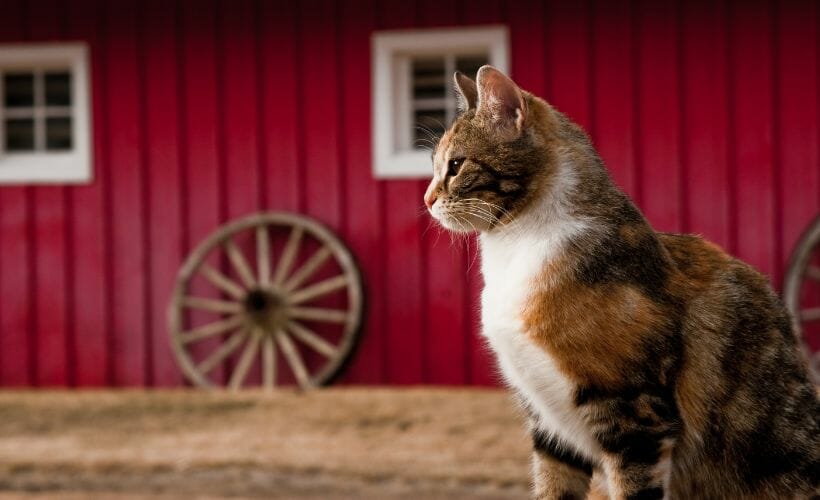
In this post, we delve into the world of barn cats, those feline companions that thrive in the company of animals rather than humans. Beyond merely keeping me company during milking sessions, these independent souls serve as vigilant protectors against the invasion of rats, mice, chipmunks, and squirrels into our precious grain stores.
It’s time to consider a barn cat. Or maybe a few of them.
This past summer, I found something horrifying in my goat shed. It was something I never expected to see. I didn’t even know this horror was possible in Maine. If you read the title of this post, you may have already guessed. I found a rat. Not a mouse or a cute little chipmunk. A huge nasty rat was gorging itself on my goat feed.
I was milking and heard a rattle in the metal bin next to me. At first, I thought it was my imagination. Finally, curiosity got the best of me, and I opened the lid. The disgusting creature leaped from the bin, onto my lap, back onto the floor, and took off. My house cat just watched it all happen. She did nothing! She simply looked at me as if to say, “Are you almost done milking so I can lick the bowl clean?”
It was horrifying. Appalling. I don’t consider myself squeamish, but I draw a line at rats invading my personal space. My pampered house cat isn’t apparently up to the job, so a barn cat might be a wise investment to our homestead. Not only will a barn cat keep the rats from touching me ever again, but they will also help protect our grain from being invaded by rats, mice, chipmunks, and squirrels.
What is a barn cat?
A barn cat is a cat who prefers the company of other animals over the company of people. They prefer an independent living setting such as a barn or outbuilding. Sometimes, these cats were given a chance to live indoors, but they were unhappy or displayed negative behaviors that didn’t make them suitable to be house cats or pets. Barn cats may befriend you over time, but they prefer a life of freedom and the killing of rodents, making them the perfect addition to a homestead.
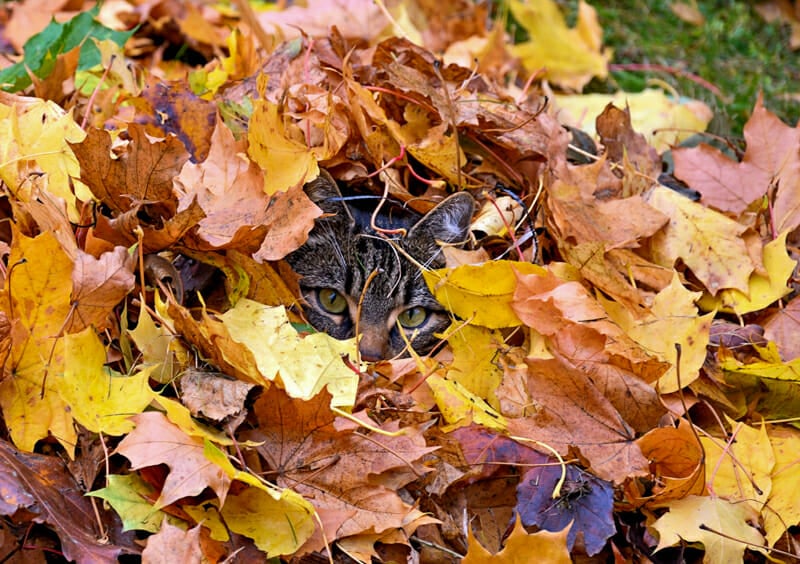
Barn Cat Breeds
Maine Coon Cats are a classic Maine cat breed (as the name implies). They are excellent hunters and incredibly intelligent. I’ve had coons, and I absolutely adore them. Maine Coons are hardy, productive workers and still generally friendly and sociable.
Other than the beloved Coon Cat, the standard for barn cats is any shorthair breed. Longer-haired breeds can be used, but their fur is at risk of becoming tangled and becoming a breeding ground for fleas and other creepy crawlies.
Where can I get a barn cat?
A quick Google search will bring you lots of barn cat programs near you. If you are in Maine, here are a few I recommend. Other options include Craigslist or local classifieds, but these come with risks. It will be your responsibility to vaccinate and fix a cat that came from the classifieds. Also, depending on how that cat has been raised, it may be better suited to a life of indoor living.
American Welfare Society
Located in West Kennebunk, AWS Barn Cats are spayed/neutered, up-to-date on vaccinations, and have tested negative for feline leukemia. The fees for barn cat adoptions vary.
Bangor Humane Society
Located in Bangor, BHS cats are spayed/neutered and up-to-date on vaccinations. They come with an optional crate in which they can be confined for 1-2 weeks prior to being released. This helps ensure the cats understand their new environment before wandering free.
Coastal Humane Society
The “Barn Buddies” is a barn cat program at CHS in Brunswick that provides barn cats free of charge.
Friends of Feral Felines
The FFF Program in Portland provides spayed/neutered cats that are up-to-date on all vaccinations. In return, they ask for a $40 donation per cat to defray veterinary expenses, with discounts for multiple cats.
Pope Memorial Humane Society
Their feline barn buddies are available for no fee and are spayed/neutered and vaccinated before being placed. PMHS is located in Rockland. The adoption fee for these feral cats varies.
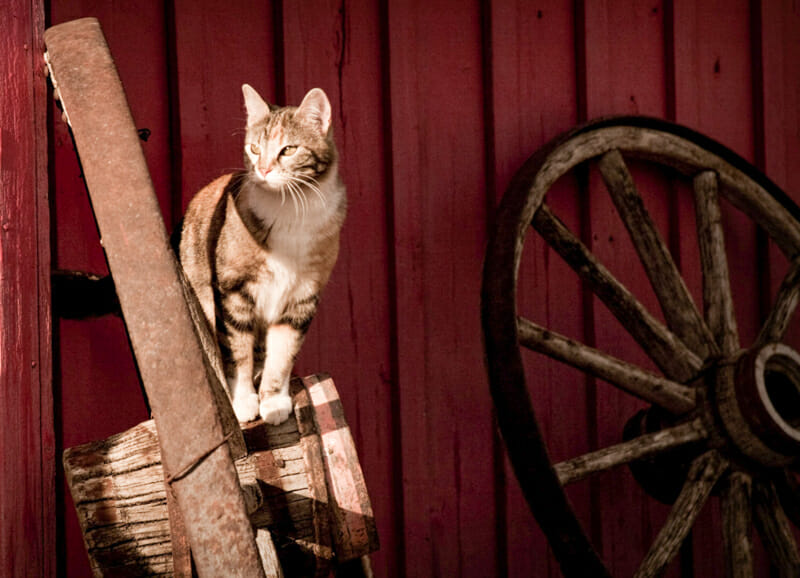
Bringing home a barn kitten
Training a barn kitten so it’s used to being outside is a bit different than training a house cat, so it’s an indoor/outdoor cat. The safest way is to contain your kittens or cats in the barn or structure for a couple of weeks in their new home. If you have a free animal stall with tall walls, that might be the perfect place to keep your kitty. About the time it takes for the kitten to figure out how to get out of the stall, it’s probably ready to explore.
If you don’t have a stall or building that will contain the cat, put the cat in a large crate to contain it. This is a great diagram for setting up a crate.
Provide a litter box. In this case, you will want to be sure to use an unscented and non-clumping litter. Your cat won’t be using a litter box once it has access to the outdoors, and the non-clumping, unscented litter best mimics the great outdoors where they’ll be doing their business in the future.
This is not the time to force a relationship with a skittish cat. The cat will bond with you when it realizes you provide food.
How much care do I give my barn cat?
Your cat(s) need shelter. Despite the name, the cat doesn’t necessarily need a barn to take shelter in, but some sort of building or structure is required. The cat will come and go as it pleases, but it needs a safe place away from the weather and predators. These DIY cozy shelters are great if you live in an area prone to cold winters.
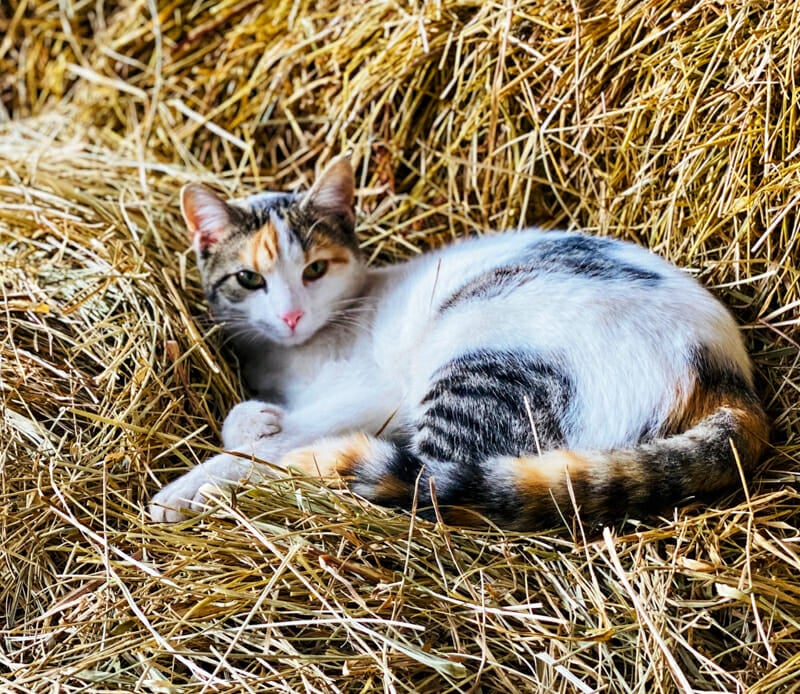
There is a misconception floating around that barn cats don’t need to be fed by their humans. That a well-fed cat won’t hunt. This is simply not true. A healthy cat is more likely to hunt. Feeding them free choice assures they stay healthy. Fresh water should always be made accessible as well.
Your barn cats should also not be left to reproduce at will. Please, if you are purchasing or acquiring an intact cat (male or female), get it fixed. There are quite a few low-cost spay and neuter programs available. You can visit ASPCA’s page to find a clinic near you. You’ll also want to get your hands on a flea and tick solution. You don’t want your barn cats bringing infectious bugs into your barn. Beyond that, your cats should require very little, if no, veterinary care.
Frequently Asked Questions
For more information on caring for barn cats, check out this article from Timber Creek Farm. For canine care for your working dog, check out how to make an essential oil flea collar for fido and how to make healthy and balanced dog food at home.
If you’ve found value in this blog post and enjoyed reading it, why not share it with your Pinterest community? Pin the image below and spread the love!
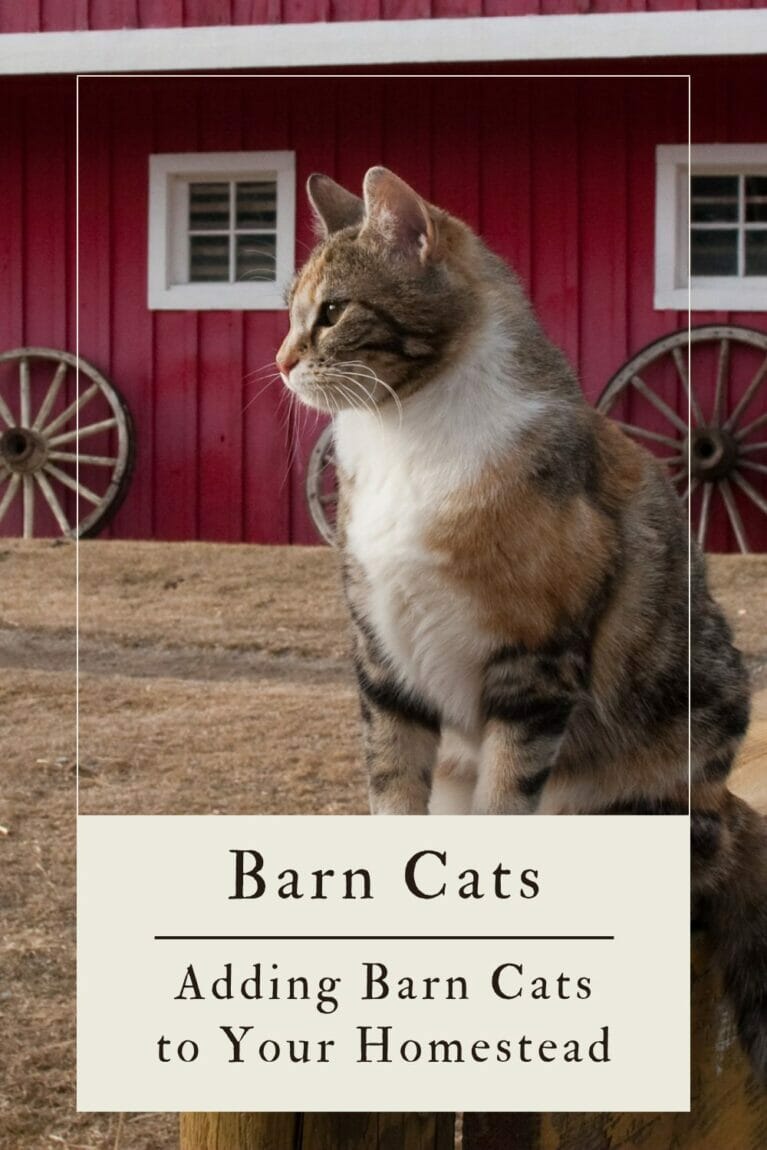
So, as we wrap up our chat about barn cats, let’s appreciate these little furballs for more than just being cute sidekicks. They’re the unsung heroes of homesteads, keeping our grain safe and sound. From busting myths about their hunting skills to helping you through the adoption maze, getting a barn cat is like gaining a four-legged guardian for your rural haven. So, here’s to the purring protectors who make barn life a whole lot cozier!
Have you welcomed one of these independent prowlers into your homestead, or are you considering it after reading this post? Share your experiences, tips, or questions about barn cats in the comments below.

Great tips! I recently got a resuce cat, so your blog was really helpful for me. I’m really looking forward to reading more posts like this, I really liked your blog 🙂
I’m so glad you found it helpful. Congratulations on your kitty!
Aside from my mixed feelings about using cats for the barn, if you decide to use cats to control rodents, periodically worm them and treat them for fleas. If they eat mice and other rodents, they will contract round worms. If they have fleas, they will have tapeworms. Talk to a vet about how best to do this. It won’t always be easy to round up your barn cats for treatment, but it is the right thing to do. Set aside more money for more vet visits, due to fights with other cats and other animals.
We visited an uncle’s farm when I was a youth. We would stay with them for a week during the summer. Near the chicken yard was an old kitchen table. After each meal the scraps were banged out of a pot on to that table while my cousin yelled “Kitty kitty”. Cats appeared from every direction it seemed. They had a large actual crib filled with corn ears. My cousin and I would sometimes ho out there with .22 caliber rifles loaded with rat shot and kill sd many as we could find. Country living for real.
yes country for sure but sounds wonderfully simple….
First of all, to those who complain about cats killing birds. The main decline of birds is due to urban sprawl, habitat loss, drought and pesticides, not free-roaming cats. It is important to understand that free-roaming cats are not the only predators of birds. Owls, hawks, falcons, raccoons, squirrels and snakes are predators of birds. Birds are killed by other causes, too. Birds are killed by flying into windows, cars, wind turbines, communication towers and high tension lines.
Secondly, some commenters complain that free-roaming cats spread zoonotic diseases (a disease that can be transmitted from animals to people) Rabies can be transmitted by cats, but is more commonly spread by wildlife: bats, foxes and raccoons. According to the article in the Journal of the American Veterinary Medical Association, approximately 92 percent of reported rabid animals were wildlife: 36.5 percent raccoons, 23.5 percent skunks, 23.2 percent bats, 6.9 percent foxes, 4.9 percent cats, 1.1 percent cattle and 1.1 percent dogs.
Third, the Feline HIV or Feline Leukemia Virus status of cats that come from the shelter/non profits is know beforehand. They are all tested. These cats are not recommended as barn cats. But I have a Feline Leukemia Virus positive indoor cat who lives among my other indoor cats and none of them are infected. It is a myth that these diseases are spread through casual contact. They are spread through vicious biting. If you have a barn cat with HIV/Leukemia virus, and if the barn cat is spayed/neutered, it is highly unlikely to fight.
Fourth, while cats are carriers of Toxoplasma gondii, the parasite is only found in their feces. According to the US Centers for Disease Control, most humans develop Toxoplasmosis from eating undercooked or contaminated meat. You literally must touch a cat’s feces and then put your hands in your mouth to possibly contract the parasite. And those with normal immune systems will mostly likely never develop Toxoplasmosis. People with weakened immune systems as well as pregnant women should not come into contact with cat feces.
Finally, I am very appreciative of my 3 feral barn cats. They are all fixed, they have their ears tipped, and they all have had rabies shots. I feed them twice a day and I double their food portions in the Winter. They get fresh water daily. In the Winter I have heated food and water bowls. I have never been able to pet them but they know the sound of my voice and will wait outside before their feeding. I talk to them through the window and they stop and listen. I have a large garden and I never worry about rabbits chewing my lettuce or any critters in my garden. I hear so many complaints about rabbits from other gardeners and it just makes me appreciate my barn cats even more. And contrary to what other commenters have said, they DO NOT ROAM. If they are fixed and fed regularly, they will stay put in and near their territory.
And finally to Nature Advocate. There is nothing “nature advocacy” about you.
It’s not called a food chain for no reason! I bet all these freaking pansies who are complaining wouldn’t bat an eye at a cat killing a mouse or a rat! PETA is ruining peoples’ minds!
Rats are a horrible problem that I had in my chicken coop last year. I considered a barn cat, but with breeding goats so close I decided not to, since cats are the only animal that can pass on toxoplasmosis oocytes. I did find out that more and more people are adopting small terrier-mix dogs to control their rat problems. Rat terriers and Jack Russells are especially good for this task. They are tenacious and have a higher kill rate. Just an idea to consider. 🙂
Great article, keep up the good work!
Holy cow – or rather, Holy cats! Jessica, I am so sorry that your wonderful website was the venting point for folks who did not express their opinion very kindly. You share a great many wonderful ideas. You also wear your heart on your sleeve – good for you! You shared your thoughts, and had done your homework. Shame on people for leaving such heated and personal comments. I’d like to think that if they used the 24-hour rule, their opinions and experiences could have been expressed in a less hostile manner. It is far too easy to fire off heated opinions and attack when one does not consider the consequences and one can “hide” on the internet. Geez – these are the same people that demand your lunch money.
I hope you have not been overwhelmed with the negativity. You rock girl, and because you are living your life they way you want, and particularly because you are sharing and educating, YOU ARE MY HERO! Don’t change a thing.
You might also enjoy knowing …
If people advocate for cats as rodent-control on farms and ranches they’ve already doomed them to being destroyed by drowning or shooting when it becomes a financial liability more than any asset. Ranchers and farmers worldwide are fully aware that cats’ Toxoplasma gondii parasite can cause the very same birth defects (hydrocephaly and microcephaly), still-births, and miscarriages in their livestock and important wildlife as it can in pregnant women. Consequently, this is also how this cats’ brain-parasite gets into your meats and onto your dinner-tables, from herbivores ingesting this cat-parasites’ oocysts in the soils, transferred to the plants and grains that they eat. Herbivores can contract this parasite in NO OTHER WAY. Not even washing your hands in bleach nor hydrochloric-acid will destroy this parasites’ oocysts if you have contracted it from your garden or yard that a cat has defecated in.
This is why any cats are ROUTINELY destroyed around gestating livestock and wildlife-management areas in the most efficient, humane, and least-expensive method available. Common rural practice everywhere. The risk of financial loss from dead livestock and important native wildlife from an invasive-species cat is far too great to do otherwise. This cats’ parasite is now even killing off rare marine-mammals (dolphins, seals, otters, and even rare whales) along all coastal regions around the world from run-off containing this cat-parasites’ oocysts. Letting your vermin cats roam free is absolutely no better and just as criminal and morally reprehensible as throwing indiscriminate rat-poison around on everyone’s property, and indeed the whole planet.
Children on farms and ranches also learn how to be a good steward of their lands when it comes to invasive domesticated species like cats, with one simple statement from the ecologically responsible parents (those who are directly dependent upon the very lands on which they live, including yourselves), “If you see a cat more’n 100 yards from any building, shoot it! It’s up to no good.” They don’t bother with expensive spaying and neutering cats, that’s too time consuming and costly for a work-cat that’s not doing its proper job. That’s how animals are “domesticated” in the very first place; keep-alive that which benefits humans, destroy the genetic lines of that which does not. The very same way that you got your vermin man-made cats in the very first place.
The next time cat-lickers bite into that whole-grain veggie-muffin or McBurger, they need to just envision biting down on a shot-dead or drowned kitten or cat. For that’s precisely how that food supply got to their mouths — whether they want to face up to it or not. It’s not going to change reality no matter how much they twist their mind away from the truth of their world.
If you want to blame someone for the drowning and shooting of cats, you need to prosecute yourselves — every time you eat. Enjoy your next meal! At least 1 cat paid for it with its life.
Here’s a good read to show you what happens to every last one of these relocated invasive-species disease-infested vermin feral-cats that people dump-off on farms and in other rural areas in ANY location of North America. (And, as I recently discovered; in Canada, the UK, and probably worldwide — they’d be fools not to.)
All you are doing is adding to the cat-shooting quotas of everyone who lives rural. What a nice waste of your money and time. I personally shot and buried literally hundreds of these invasive-species vermin cats to stop them from gutting-alive and skinning-alive the last of the native wildlife on my lands. Cats adopted by pavement-brained fools (on their 3-10 acre hobby-farms) from “humane” barn-cat programs ran by equally pavement-brained cat-licking morons. Many hunting-forums even pass along contact information of any new “barn cat programs” — for free delivery of FREE practice-targets between hunting seasons. I don’t condone this, because if they miss then I have to shoot them myself when they wander into my own lands. “Hello? Yes, I have a bad rodent problem out here in the country. Can you bring out about 6 of your cats? Thanks!” (A week later: BANG! BANG! Dāmņ, missed one. BANG! BANG! BANG!) Your cats are “valuable”, alright. But not in any way that you might ever think.
Cats that are relocated NEVER stay where they have been dumped. This is why you read reports of cats trying to get back to their points of origin hundreds of miles away. All the while senselessly destroying countless numbers of valuable native wildlife in their wake by torturing animals to death for their hourly play-toys. People in rural areas have enough of their own problem keeping these disease-infested vermin in check by shooting every stray cat they see (if only to protect their own animals and cats from the 3dozen+ deadly zoonotic diseases these free-roaming pestilent vermin cats carry and spread to all other animals and humans today).
You needn’t go adding to everyone’s weekly cat-shooting-quotas by releasing more of these pestilent vermin. “Cute” they are not. They ALL need to be destroyed. There are dozens of native predator species that are MUCH better suited for rodent control. Ones that eat rodents only and don’t destroy everything that moves, like cats do. There’s a good reason one species was even named the Barn-Owl, another the Rat-Snake. Gray-Fox being another excellent mouser, they don’t even have European fowl on their menus and will even climb trees to keep squirrel populations in check. Even the 1.75-inch Masked-Shrew, a David & Goliath success story, evolved a poisonous bite specifically for preying on rodents right where they breed. Even the scent of these miniature marvels being around drives away rodents. But what do their cats do? They destroy these most beneficial of all rodent predators the very first chance they get.
Cat-lickers (criminally irresponsible cat-hoarders) need to become responsible stewards of this planet by getting at least a high-school level of education in matters of ecology and biology so the rest of us don’t have to teach you a valuable lesson by shooting and burying every last one of your invasive species vermin cats for you.
And just know, if you DON’T warn everyone what happens to your unwanted vermin barn-cats, it only means that thousands of more people will be throwing their unwanted cats in front of loaded guns. It’ll be YOUR fault when that happens. Welcome to the REAL world!
The municipalities with the worst rat problems in the USA are also the municipalities with the greatest populations of community-vermin cats. Surprising? Not at all. Here’s why:
The myth about cats being good rodent control has been disproved on every island where cats were imported to take care of the imported rodents. Hundreds of years later and there’s nothing but a thriving population of cats and rodents — all the native wildlife on those islands now either extinct or on the brink of extinction — even those native species which are better rodent predators than cats (such as many reptiles and shrews which destroy rodents right in their nests), the cats having destroyed them directly or indirectly.
The rodents reproduce in burrows and holes out of the reach of cats, where they are happy to reproduce forever to entertain cats the rest of their lives, and make your own lives miserable, on into infinity. On top of that, when cats infect rodents with cat’s Toxoplasma gondii parasite, this hijacks the minds of rodents to make the rodents attracted to where cats urinate. This cat-shat parasite also causes still-births and birth-defects in all your gestating livestock, same as it does for pregnant women. A farm or ranch can have its whole operation shut-down for up to 4.5 YEARS (how long cat-shat oocysts remain infections in the environment) by the FDA if any of your produce from your farm or ranch (meats, eggs, vegetables, etc.) is found infecting humans with this deadly brain-hijacking parasite that reproduces IN CATS ONLY.
Cats actually attract disease-carrying rodents to where cats are if they infect rodents with this parasite. The cats then contract myriad of diseases on contact with, or being in proximity to, these rodents. Like “The Black Death”, the plague, that is now being transmitted to humans in N. America directly from cats that have contracted it from rodents. Yes, “The Black Death” (the plague) is alive and well today and being spread by people’s cats this time around.
Cats attracting these adult rodents right to them further increasing the cat/rodent/disease density of this happy predator/prey balance. It has been documented many many times. The more cats you have the more rodents and diseases you get. I even proved this to myself when having to rid my lands of hundreds of neighbors’ vermin barn-cats by shooting and burying every last one of them. A rodent problem started to appear about the same time the cats started to show up, 15 years of it. And, if you check the history of Disney’s feral cat problem, their rodent problem also started to appear at the very same time their cats showed-up. Coincidence? Not at all. (BTW: All cat-lickers’ beloved Disney’s TNR cats are no more, they’ve all been destroyed by hired exterminators this last year. Disney finally wised-up. But they are still plagued with perpetual cat-dumpers now.) All rodent problems around my home completely disappeared after every last barn-cat was shot-dead and safely disposed of. All the better NATIVE rodent predators moved back into the area after the cats were dead and gone. Not seen one cat anywhere nor had even one rodent in the house in over eight years now. (So much for their manipulative, deceptive, and outright lie of the mythical “vacuum effect” too.)
Cats DO NOT get rid of rodents. I don’t care how many centuries that people will claim that cats keep rodents in-check, they’ll still be wrong all these centuries. Civilizations of humans have come and gone in great cities in Egypt, yet their cats and rodents remain in even greater pestilent numbers.
No cat population anywhere has ever been able to control rodents effectively, in fact cats only attract a rodent problem. But native predators can get rid of rodents — easily.
I hope someday to be able to provide a great home (and the feline leukemia(FeLV)/aids(FIV) vaccines) for feral cats who would otherwise be living wild on the streets or be put down!
Until we’re ready to adopt some feral kitties as barn cats, we keep our feed in a metal garbage can. The only other effective option for rat control is poison, which can be dangerous to neighbor’s pets.
Thank you for the article. We love and care for our barn cats. I’m sorry but I laughed out loud while reading about the rat jumping on you! I would of had a heart attack!
Thank you for such a thoughtful and needed article. I just wanted to add that here in Louisville Kentucky the Kentucky Humane Society has a program as well that adopts out working cats. They are spayed/neutered, vaccinations (including tested for feline leukemia and aids as another commenter addressed) and treated for fleas. After a long conversation on the phone They bring the cats to your place and assess the situation. They are kept in a nice big cage that they provide, it’s always 2 cats that have already been introduced to each other(they’ve found cats do better when they have a buddy), they provide all needed items while the they are confined. This is done for about a week so the cats can associate there new building as home.
Without this program and others like it these cats would’ve been euthanized but they’ve been given a second chance. They’ve been deemed unadoptable for various reasons. And all of this is done free of charge, donations accepted.
So my opinion is outdoor cats are vital to a farm or any situation where there is rodent problems. Don’t feed the songbirds, they don’t need a buffet, cats prefer critters with 4 legs versus those with 2.
Hey Jessica. Wow. I am so shocked to read your suggestions about a “Barn Cat.” As one who TRULY takes care of her
HOUSE cats, it is offensive, and even more than this, incorrect, to suggest that we get a barn cat to help with a rat
problem. Please check out the number of birds, who often mate for life, who are killed by cats. But then, there is the
health of the cat to consider. Feline leukemia and aids are rampant among cats living out-of-doors. By simply eating
out of an infected animals’ food bowl, a cat can come in contact with these diseases. Hawks, owls and other large
birds have been known to grab kittens and YES cats.
We have a large, screened-in porch where our house cats are allowed to play & come in whenever they like. I consider
our pets to be among the lucky ones.
Please rethink your views. To keep a cat outside with the knowledge that exists about such treatment for rats and animal
care is ignorant.
Community Cat Advocates is another great option in Maine. They capture, then spay/neuter feral cats and give them away for barn cats. They even deliver! My two barn cats have a been a huge homestead blessing 🙂